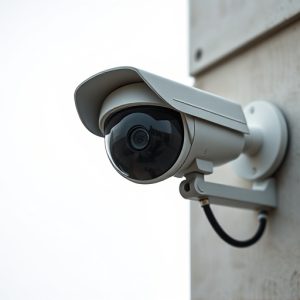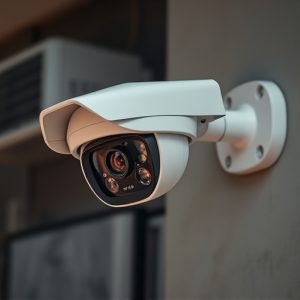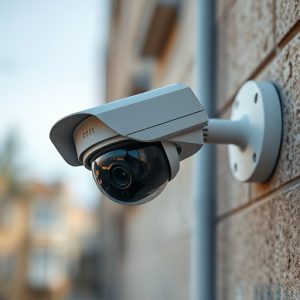Optimize Security: Mastering Fake Camera Placement at Eye Level
Strategic placement of fake security cameras at varying heights—from eye level to elevated&mda…….
Strategic placement of fake security cameras at varying heights—from eye level to elevated—deters crime by simulating active surveillance and exploiting human concealment tendencies. Balancing visibility and area-specific considerations, cameras should be mounted slightly above eye level for clear footage without obstructions. Discreet positioning on ceilings, walls, or corners, along with realistic design details, maintains an invisible security network. Avoid common mistakes like typical eye-level placement and overcrowding; instead, focus on strategic alignment to maximize effectiveness in deterring criminals and capturing detailed footage.
In today’s digital era, enhancing security through strategic fake security camera placement is a game-changer. Understanding the psychology behind where to position these cameras can deter crime significantly. This article delves into the art of choosing the optimal height for fake security cameras, offering discreet yet effective positioning strategies. We’ll guide you through common mistakes to avoid and provide tips on enhancing security through strategic camera alignment, ensuring your space remains a well-guarded domain.
- Understanding the Psychology Behind Fake Camera Placement
- Key Considerations for Choosing Optimal Height
- Visually Discreet Yet Effective Positions
- Common Mistakes to Avoid in Setup
- Enhancing Security with Strategic Camera Alignment
Understanding the Psychology Behind Fake Camera Placement
Understanding the psychology behind fake security camera placement is key to an effective strategy. Criminals often look for easy targets, and their behavior can be influenced by what they perceive as visible surveillance. Strategically placing fake cameras at strategic heights can deter crime significantly. By simulating active surveillance, these decoys can make would-be intruders think twice before attempting any malicious activities.
Fake security camera height placement should consider common entry points and potential hiding spots. Installing cameras at varying heights, from eye level to elevated positions, creates an illusion of all-encompassing coverage. This tactic exploits the human tendency to seek concealment, making it harder for criminals to feel secure in their actions.
Key Considerations for Choosing Optimal Height
When determining the optimal height for fake security camera placement, several key considerations come into play. The primary factor is visibility—placing cameras at a height that offers clear, unobstructed views of the target areas is essential for effective surveillance. This usually means mounting them slightly higher than human eye level, ensuring they can capture detailed footage without interference from obstacles like foliage or passing pedestrians.
Moreover, the specific type of area being monitored influences the ideal camera height. For instance, in open outdoor spaces, a higher placement might be necessary to account for natural elements and potential line-of-sight obstructions. Conversely, indoor settings may require lower heights to monitor corridors, staircases, or areas with low ceilings while avoiding the cameras’ detection by individuals within the frame.
Visually Discreet Yet Effective Positions
When strategizing fake security camera placement, it’s crucial to find a balance between discretion and effectiveness. Cameras should be positioned in such a way that they appear natural and non-intrusive while still offering optimal coverage. One effective approach is to place them at eye level or slightly below, mimicking the height of real security equipment. This tactic not only ensures clear and unobstructed views but also prevents potential criminals from easily spotting or disabling them.
To further enhance discretion, consider mounting cameras on ceilings, walls, or corners, where they can blend into the environment without drawing attention. Using realistic-looking fake cameras with detailed designs and LED lights that mimic real camera functionality can also deter would-be thieves. By combining clever placement and lifelike replicas, you create a robust security network that is both effective and virtually invisible to the untrained eye.
Common Mistakes to Avoid in Setup
Many homeowners and business owners make the mistake of placing their fake security cameras at eye level or too high, assuming this will provide optimal coverage. However, this strategy often overlooks the importance of human perception and potential blind spots. Cameras positioned at typical human eye level can miss crucial details due to the natural angles and movements of individuals. For instance, a camera aimed straight ahead might not capture someone approaching from an angle or hiding behind objects placed too close to the camera’s field of view.
Another common error is overcrowding the area with numerous cameras instead of strategically placing a few well-positioned ones. While it may seem like more cameras are better, this approach can create a complex network that becomes difficult to monitor and maintain. Overcrowding also risks drawing attention to the fact that these are fake cameras, defeating their purpose as deterrents. Opt for placement methods that mimic real security systems, ensuring each camera covers a specific area without overlap or gaps, thus maximizing both effectiveness and realism.
Enhancing Security with Strategic Camera Alignment
Strategic camera alignment is key to enhancing security measures, especially when utilizing fake security camera height placement techniques. By carefully positioning cameras at optimal heights, you can maximize their effectiveness in deterring potential criminals and capturing clear, detailed footage. Lower-mounted cameras are ideal for areas with high foot traffic or where broad coverage is needed, as they provide a wider field of view, ensuring no blind spots exist. Conversely, higher camera placements offer enhanced zoom capabilities, making them perfect for monitoring specific, distant objects or entry points.
This strategic alignment involves considering factors such as lighting conditions, potential obstructions, and the area’s unique layout. Proper placement ensures that cameras capture clear images day and night, without shadows or glints that could obscure details. It also prevents criminals from easily blocking or obscuring the camera’s line of sight, maintaining a robust security network.
In conclusion, a well-executed fake security camera placement strategy can significantly enhance home or business security. By understanding psychological triggers and key considerations for optimal height, choosing discreet yet effective positions, avoiding common setup mistakes, and strategically aligning cameras, you can create an illusion of surveillance that deters potential intruders. Remember, the right placement can make all the difference in ensuring a safer environment.


